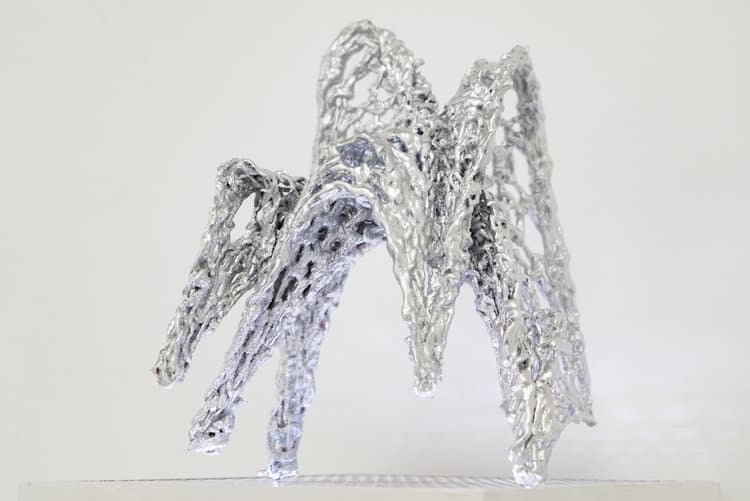In 1978, on the 25th anniversary of the CIA coup that re-installed the Shah of Iran, four men doused the Cinema Rex theater in the city of Abadan with jet fuel, and burned the building down. As many as 800 people died. Prior to 9/11, it was the deadliest terrorist attack in the history of the planet. Even 40 years later, it’s still not clear exactly why they did it. Even now, we are still scrambling to construct a story that makes sense.
Within a year, the Shah had been overthrown. Many narratives of the Iranian Revolution treat the theater fire as the inciting incident of the revolution, as vengeance for the murderous injustice–a sort of ghost story.
This sort of creation, of martyrs, of idols, of monuments, is a form of destruction, Mark Shetabi and Norm Paris seem to say in their joint exhibition, “Ghost Stories,” because any story we tell about the dead, the famous, is less about them as it is about us. Ortega y Gasset Projects curator Lauren Whearty told me that these artists did not collaborate on their projects–their combined meanings were only constructed after the fact, their original intents eradicated for this collected effort.
Paris’ “Monument” series exemplifies this, depicting enormous half-formed statues, either emerging from their marble slabs or being consumed by them. Paris’ work is laser-focused on this process–in “Erased Cards (Tower),” players are whitewashed from their own trading cards–the only parts of them left uncovered are the legs, all in powerful, dynamic stances, each indistinguishable from the rest. In “Stacks, 2019,” this process is complete–records, cassettes, VHSes, and cards are obscured, their original truths erased for a greater narrative.
Nowhere is this more prominent than in “Monster Movie” by Mark Shetabi, who fled from the Iranian Revolution in 1979. The victims of the Cinema Rex fire here are doubly erased–the auditorium is hidden behind computer privacy filters, and once you get the proper angle to see inside, all the seats are empty.
Everything–the audience, the fire, the movie itself, have denatured into the melted, amorphous monster standing triumphantly above it, spot-lit like King Kong from below. Much of the rest of Shetabi’s work runs along these lines–empty chairs; viscous, bubbling creatures–except for two. “Jackal,” a sharp-edged, jagged bust of the native Iranian scavenger, seems out of place and unnatural against the organic, flowing shapes of human atrocity. The other: “Future Objects: Astronaut”–a tiny figure in a space suit hidden in a small box, itself tacked into a corner I only caught because I double-checked the gallery’s image list before leaving.
It’s a tentative glimpse of a future where jet fuel can be used the way it’s supposed to be, when monuments don’t need to be larger than life, because they’re still alive. It’s easy to miss.
Author
Discover more from Red Hook Star-Revue
Subscribe to get the latest posts sent to your email.










